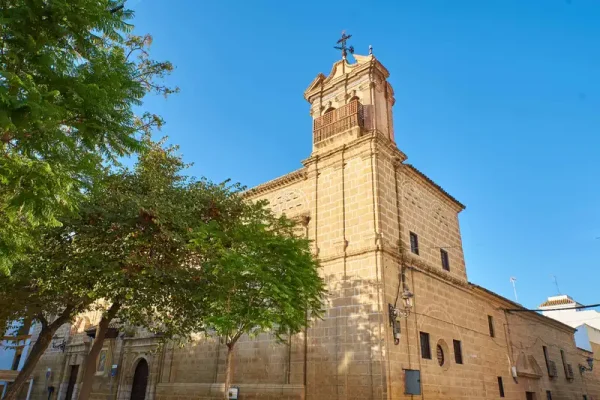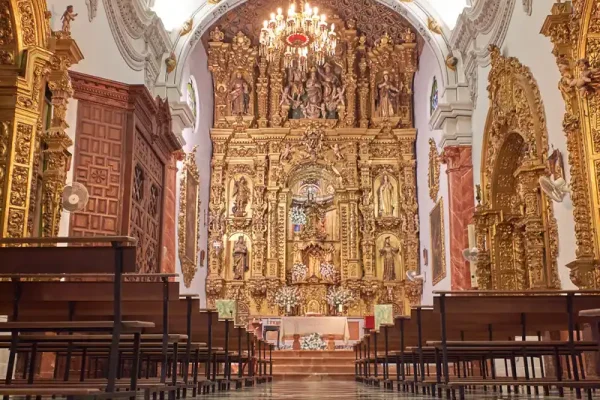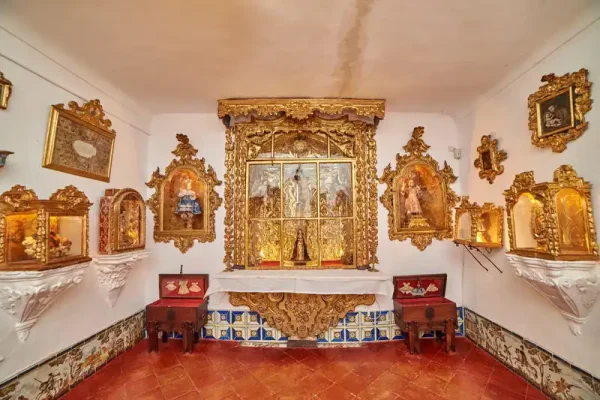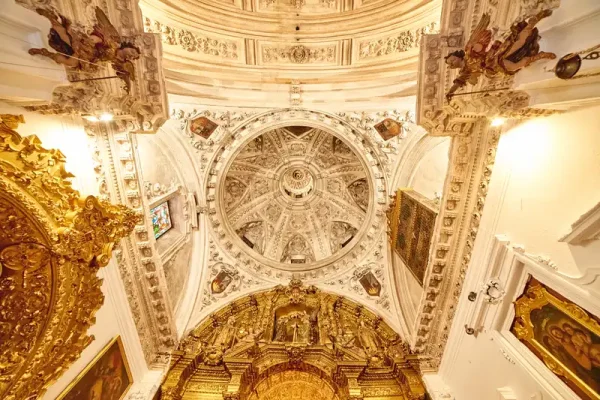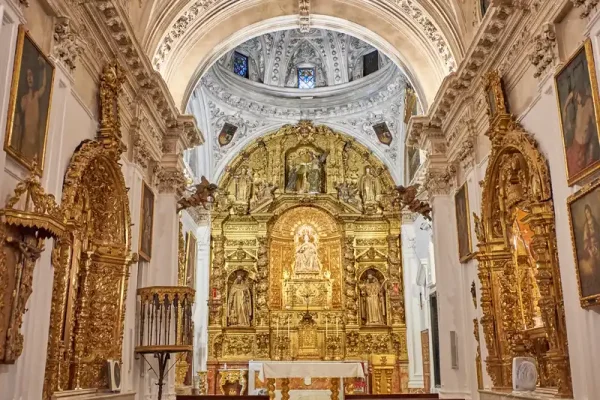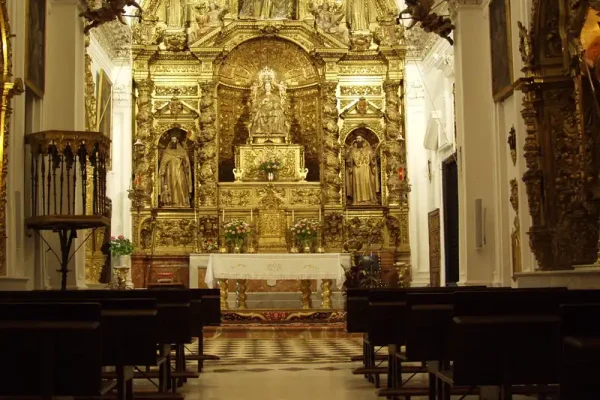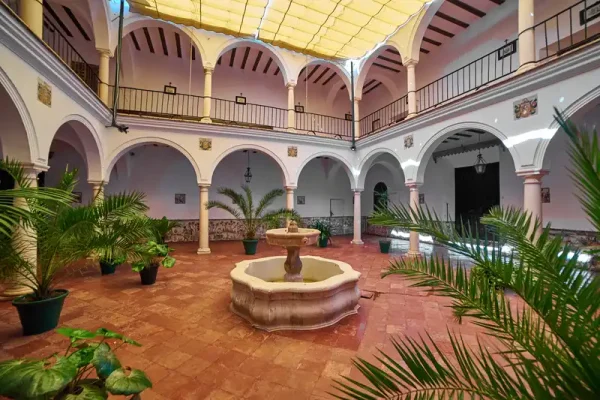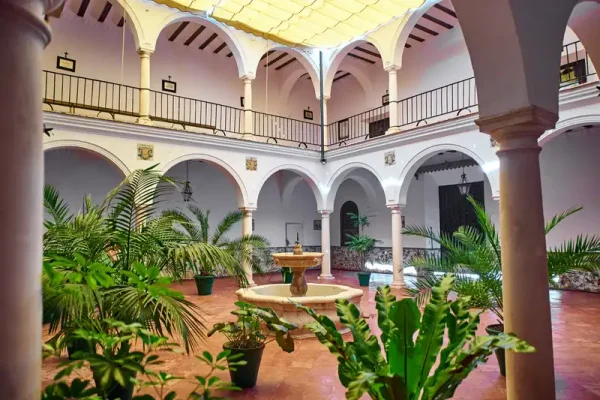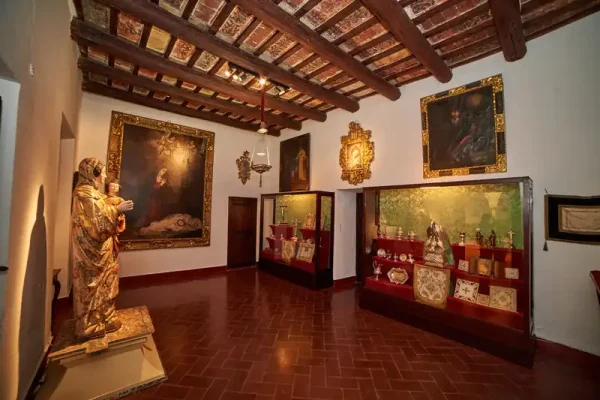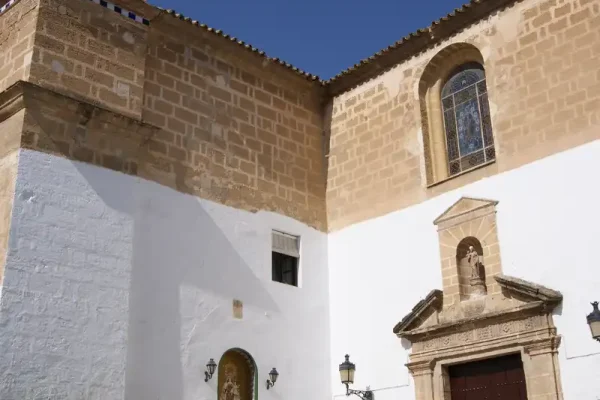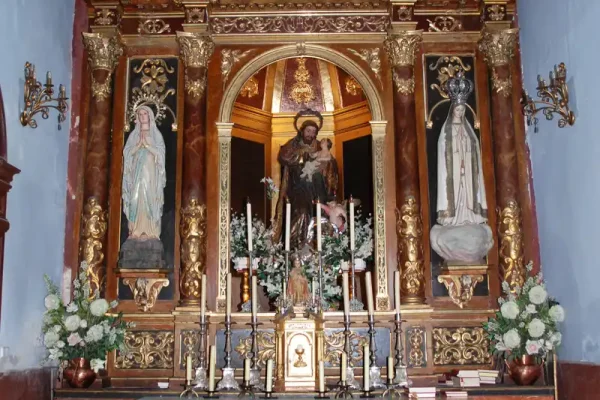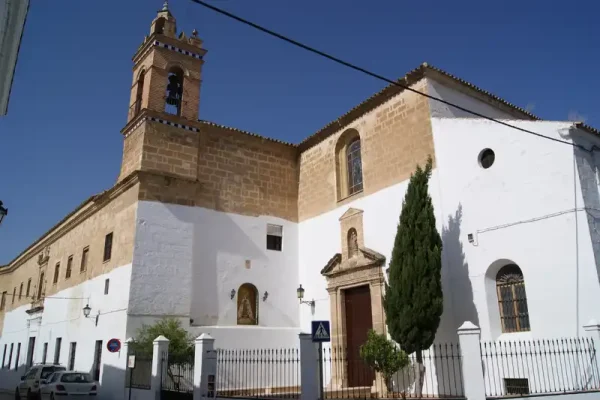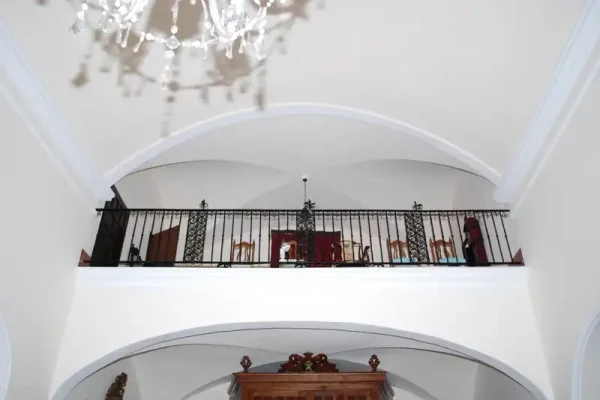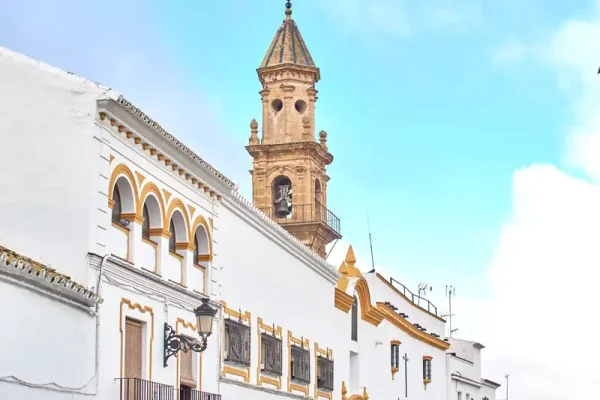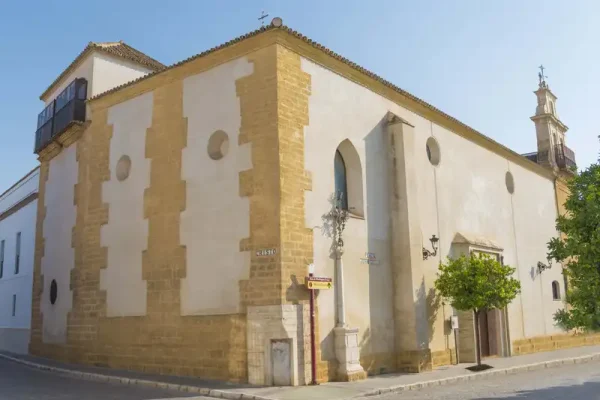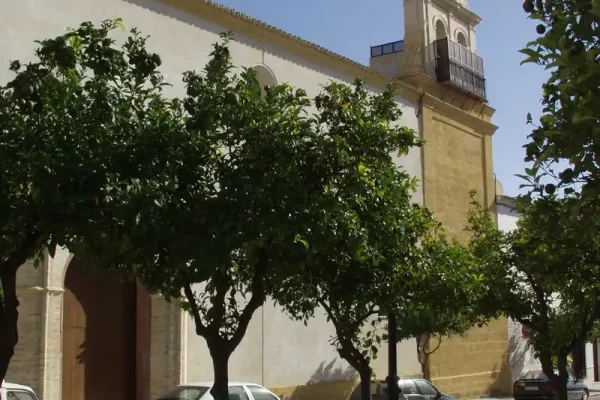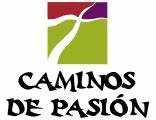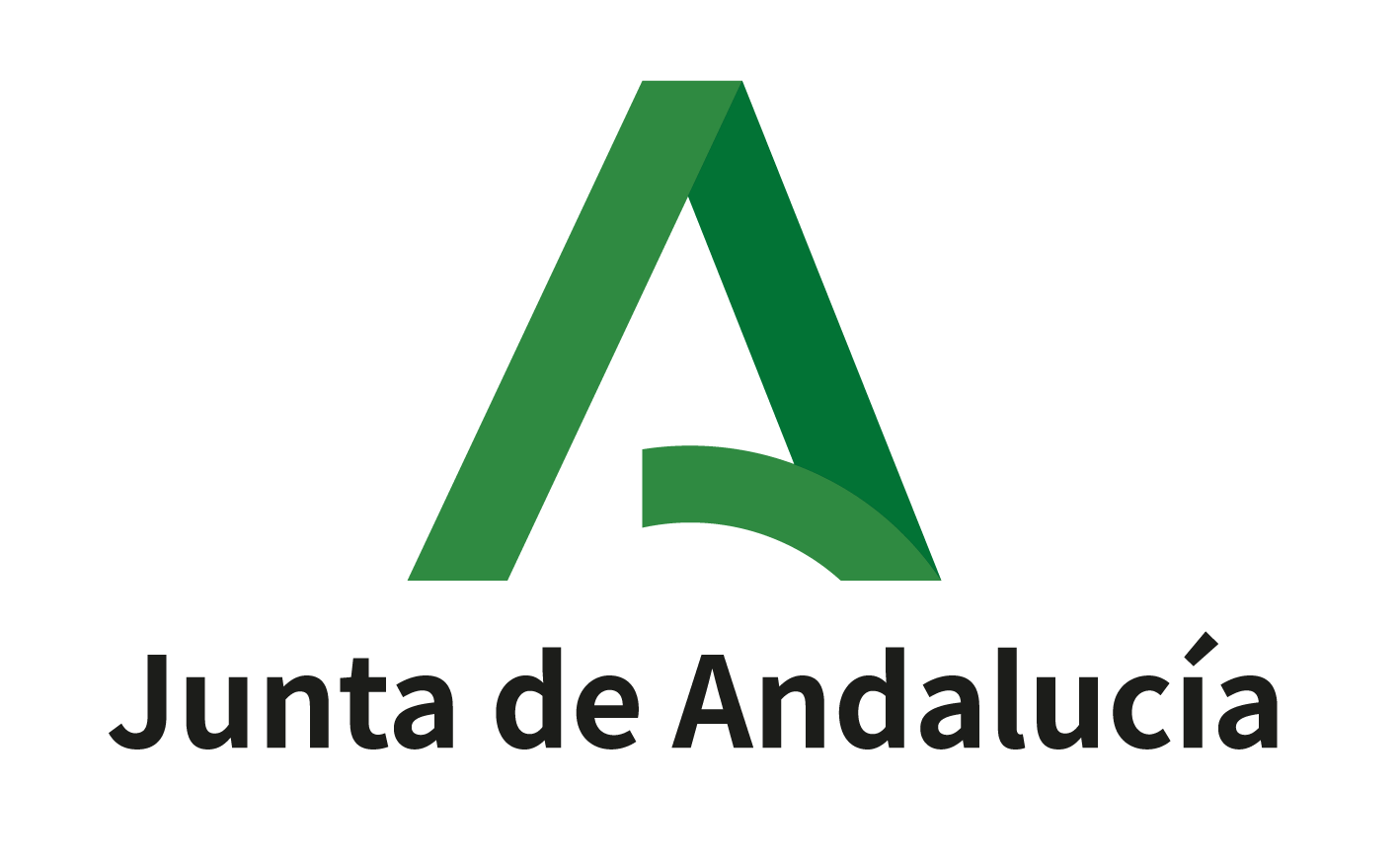


- Convent of the Conception
- Convent of the Incarnation
- Church of the Convent of Carmen
- Convent of the Holy Spirit
- Convent of Saint Peter
Convent of the Conception
16th and 17th centuries. Order of Franciscan Conceptionists.
The foundation of the Conceptionist Sisters convent dates back to 1566.
The heavy horizontality of the façade, which is almost blind from one end to the other, is broken to allow for a two-section brick belfry, whose bells are the loudest in the city.
Its structure corresponds to the conventual model, with a single nave, one of the highest in Osuna, covered with a barrel vault and a main chapel with a wooden coffered ceiling decorated with interlacing motifs.
The main altarpiece was commissioned in 1717 from Francisco María de Ceiba. Organised with powerful estipites, it features sculptures from the same period representing Saint Joseph, Saint Michael, Saint Francis and Saint Beatriz de Silva, the latter being modern. The central niche features the Virgin and Child, and the attic features Saint Joachim, Saint Anne and the Coronation of the Virgin.
From his stall, you can buy everything from torrijas (French toast) and fried doughnuts to his delicious Moroccan cakes.
Convent of the Incarnation
Open for guided tours.
This building was completed in 1549 and its original purpose was to serve as the Hospital de la Encarnación del Hijo de Dios (Hospital of the Incarnation of the Son of God).
In 1612, it was occupied by the Jesuits, and in 1626, the 4th Duchess of Osuna founded the monastery on the site of the old hospital, which was to be run by the nuns of the Royal and Military Order of Mercy.
The façade is made of brick, with the entrance framed by pilasters and topped with a broken pediment.
The interior of the church consists of a single nave covered with a barrel vault with openings. The main altarpiece is Baroque, with a sculpture of the Virgin of Mercy standing out in the main niche.
Through the church, we enter the courtyard. This courtyard is surrounded by an 18th-century Sevillian tile baseboard depicting biblical scenes, the five senses, the four seasons, street scenes, and nuns praying in chorus. There are also scenes of hunting and bullfighting.
Much of the interior of the cloister has been converted into a museum, arranged around the main cloister. The museum consists of four rooms, featuring an important collection of Baby Jesus figures, gold and silverwork, and significant works of religious imagery.
In terms of pastries, you can buy doughnuts, cakes, almond buns, coconut balls, Colombian snacks, San Ramón yemas (almond sweets) and suspiros de ángel (marzipan sweets).
Church of the Convent of Carmen
16th century. Currently a convent of the Carmelite Fathers. Free admission.
In 1606, the convent, donated by Don Juan Téllez Girón, was occupied by the Carmelite Order. Construction of this church must have begun in the early 16th century, as its unfinished chevet features Gothic and Renaissance elements. Later, in the 18th century, the naves and the façade were renovated. The interior of the temple has three naves mounted on pillars and covered with a barrel vault.
The presbytery houses one of the most important altarpieces of the Sevillian Renaissance. Dating from around 1588-1590, it is composed of three sections, three rows and four intercolumniations. The architectural work and carvings are attributed to Juan de Oviedo el Viejo and Diego de Velasco, with the relief of Noli me tangere standing out powerfully. The niche is a later addition.
The church choir features interesting seating from the Convent of the Calced Carmelites in Écija, which can be dated to the late 17th century. It has a total of 22 seats, the backs of which feature pictorial representations of Carmelite saints, identifiable by the labels on them.
Convent of the Holy Spirit
Former convent of the Canons of the Holy Spirit. It is currently run by the Sisters of the Cross.
There are records of the establishment of the Holy Spirit dating back to a few years after the mid-16th century. Inhabited by a congregation of canons, they were responsible for maintaining the Foundling House until its secularisation in the 19th century. Since 1939, worship has been conducted by the Sisters of the Cross.
The convent has undergone significant modifications throughout its long history, changing its initial location on the Camino de Sevilla to its current location. The new convent was built between 1595 and 1616. Its current appearance is the result of a major renovation carried out in the second half of the 18th century. Inside, it has a single nave covered with a semi-spherical vault over the main chapel, where the Rococo-style altarpiece, created in 1772 by Antonio Palomo from Antequera, was placed. Around the same time, the striking niche that housed the Virgin of Guía was built. Outside, at the foot of the church, stands a three-section tower covered with a pyramidal spire.
Convent of Saint Peter
16th century. Currently occupied by the Discalced Carmelite nuns.
According to tradition, the church of San Pedro was founded by Don Pedro Téllez Girón as a burial place for his servants. After the death of the 4th Count of Ureña, the Discalced Carmelite nuns who occupy it today came to live there.
The Carmelite nuns were already in Osuna before this convent was founded, as they occupied a convent that existed near the Church of San Juan de Dios, dedicated to Saint Elizabeth, founded by Isabel Méndez de Sotomayor. In 1564, they decided to move the convent and leave the intramural area, due to the neglect and discomfort of the location. Since 1575, they have been in their new monastery in the Plaza de San Pedro.
It is interesting to note that it was the first foundation established by the 1st Duke of Osuna (son of Don Juan Téllez Girón), which he created together with his mother, Doña María de la Cueva.
Its structure follows the conventual model of a single nave covered with a barrel vault with lunettes, while the chancel is covered with a groin vault.
At the shop located at 19 Cristo Street, you can purchase traditional convent pastries such as sponge cakes and muffins.




